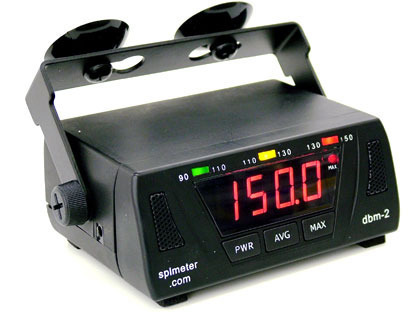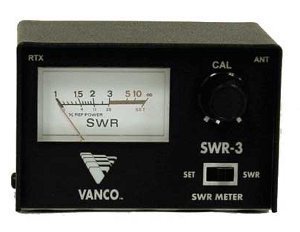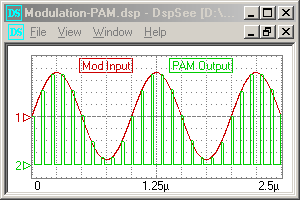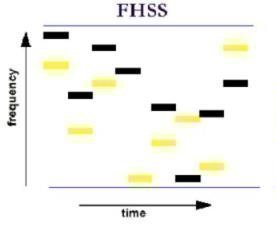dBm is the standard unit of measure for levels of power based on a one milliwatt (mW) reference signal. The dBm measurement is very similar to dB (decibel); however, dB is a relative measure of the power of an input signal while dBm is always an absolute value based on a single milliwatt. If there is a negative symbol located in front of a dBm measurement, a loss is indicated. The absence of a sign, or a positive one, represents an absolute positive gain when representing the measure of a signal with dBm.
What is the dBm Formula?
dBm can be determined by using the following formula:
dBm = log10 Signal Power / .001 watt
What is a Decibel?
A decibel (represented by the symbol dB) is a logarithmic unit of measure used to represent the ratio of values as measured in intensity or units of power based on the bel unit of measured named after Alexander Graham Bell. One of the quantities is the reference value with the end result representing the physical value or quantity. It is commonly used as a measure of the ratio of the input and output of a system or to measure two factors that help make up the targeted ratio. The mathematical definition for the decibel as a sound intensity level is given by A = 10log(P2/P1), where P2 is the measured output power.
The decibel is used in a variety of applications in control theory, acoustics, and electronics. Some of these include the measure of signal-to-noise ratios, signal attenuation, and the respective gain of an amplifier. One of the disadvantages to using the dB measurement is that it can be confusing. For example, if there is a change in the ratio by a factor of two, this is expressed by a three decibel change. A change in the voltage ratio by a factor of two; however, is roughly a six decibel change.
What are the Disadvantages of Measuring Decibels?
Unlike the dBm measurement, there are a number of disadvantages associated with using the decibel as the primary unit of measure. These include but are not limited to:
– Confusion associated with using the decibel unit of measure.
– The decibel concept is becoming increasingly outdated in the era of modern digital processing.
– The logarithmic basis of the decibel measurement makes reasoning based on the measure more challenging.
– Decibel readings can be a challenge to interpret appropriately.
 – The decibel is not additive in nature which makes it inappropriate for dimensional analysis.
– The decibel is not additive in nature which makes it inappropriate for dimensional analysis.
What is the dBu Unit of Measure?
Since its normally easier to conduct measurements of voltage rather than power, some prefer using the voltage of a system as a reference. As a result, the dBu unit of measure is used many times in audio systems vice dBm. The dBu unit is calculated by: A = 20log(V2/V1). In this formula, the reference level is 0.77 volts rms. In most audio equipment, the normal dBu line level is 4 dBu. As a result, in some professional audio equipment, the gear will be calibrated to read a 0 on a VU meter after a signal at +4 dBu has been applied to the system. For consumer audio equipment, the nominal signal level will normally be set to -10 dBV. As a result, some gear may offer dual output settings in order to ensure interoperability with gear that may only be set to either the professional or the consumer standard. When this occurs, the shift in readings is normally accomplished via a manual switch located near the output readout.
What are the Uses for dBm Measurement?
There are a variety of applications that using the dBm measurement is more appropriate than the dB ratio across the engineering and acoustics fields. These primarily involve applications that require an absolute measure of the “thing” or signal.
Electronics Measurements
The decibel (dB) is commonly used in the electronics field to express either amplitude ratios or power. Industry has found an advantage to measuring the total gain of a set of components placed in series can be calculated through the summation of the individually measured gains (in dB) for each of the given components. The telecommunications industry also uses the dB measurement to represent the overall signal loss or gain from a transmitter to a receiver after passing through a transmission medium.
Industry also finds the absolute measure that dBm provides to be useful since 0 dBm represents a level equivalent to a single milliwatt. One dBm in these cases is equivalent to approximately 1.259 milliwatts. In military electronics studies, the dBm system of measurement is commonly used when describing the overall receiver sensitivity of either communications or radar receivers. For example, legacy radar receivers in the U.S. Navy are commonly rated at -107 dBm which means that they are capable of detecting signals that are 107 dB beneath or below one milliwatt.
Measurements in Optics
In the field of optics, both the dBm and dB units of measure are used. For example, in any given optical link if the amount of optical power is known in dBm (as referenced to a single milliwatt), and the signal is transmitted into fiber, then if the signal loss of each component in the line (including splices, connectors, and length of fiber), the overall link loss of the line can be calculated.
When used in measuring the signal-to-noise ratio or dynamic range in digital and video image sensors; however, the decibel is used as the unit of measure taking into account 20 log of the ratio vice the square of the figure.
WiFi Network Signal Measurement
Similar to other electronics and acoustics uses, WiFi network radio signal measures are also represented by a decibel measurement. All manufacturers represent the output of their WiFi antennas and receivers using a decibel rating; however, the measure uses dBm vice dB as compared to the referenced one milliwatt of electric power. Generically speaking, the larger the rated output of a WiFi antenna or transceiver, the greater the theoretical range of the device. A significant drawback; however, is if the device is battery powered, it will required an increased power level to operate. This will result in a decrease in overall batter life on mobile devices that rely on battery power to operate.
dBm Conversion Table
The following table can be used as a ready reference for converting between dBm, dBW, mW, and watts.
|
Power (dBm) |
Power (dBW) |
Power (watt) |
Power (mW) |
|
-100 dBm |
-130 dBW |
0.1 pW |
0.0000000001 mW |
|
-90 dBm |
-120 dBW |
1 pW |
0.000000001 mW |
|
-80 dBm |
-110 dBW |
10 pW |
0.00000001 mW |
|
-70 dBm |
-100 dBW |
100 pW |
0.0000001 mW |
|
-60 dBm |
-90 dBW |
1 nW |
0.000001 mW |
|
-50 dBm |
-80 dBW |
10 nW |
0.00001 mW |
|
-40 dBm |
-70 dBW |
100 nW |
0.0001 mW |
|
-30 dBm |
-60 dBW |
1 μW |
0.001 mW |
|
-20 dBm |
-50 dBW |
10 μW |
0.01 mW |
|
-10 dBm |
-40 dBW |
100 μW |
0.1 mW |
|
-1 dBm |
-31 dBW |
794 μW |
0.794 mW |
|
0 dBm |
-30 dBW |
1.000 mW |
1.000 mW |
|
1 dBm |
-29 dBW |
1.259 mW |
1.259 mW |
|
10 dBm |
-20 dBW |
10 mW |
10 mW |
|
20 dBm |
-10 dBW |
100 mW |
100 mW |
|
30 dBm |
0 dBW |
1 W |
1000 mW |
|
40 dBm |
10 dBW |
10 W |
10000 mW |
|
50 dBm |
20 dBW |
100 W |
100000 mW |
|
60 dBm |
30 dBW |
1 kW |
1000000 mW |
|
70 dBm |
40 dBW |
10 kW |
10000000 mW |
|
80 dBm |
50 dBW |
100 kW |
100000000 mW |
|
90 dBm |
60 dBW |
1 MW |
1000000000 mW |
|
100 dBm |
70 dBW |
10 MW |
10000000000 mW |
dBm Conversion Formulas
In the event you need to manually convert a more exact measurement of dBm than listed in the table above, the following are the conversion formulas required to conduct the various operations:
Steps to Convert dBm to Milliwatts (mW)
The conversion consists of power in milliwatts (P(mW)) being equal to 10 raised by the power in dBm (P(dBm)) divided by 10.
P(mW) = 1mW · 10^(P(dBm) / 10
Steps to Convert Milliwatts (mW) to dBm
The conversion consists of the power in dBm being equal to the base 10 logarithm of the power in milliwatts (mW):
P(dBm) = 10 · log10( P(mW) / 1mW)
Steps to Convert dBm to Watts (W)
The conversion consists of the power in watts (P(W)) being equal to 10 raised by the power in dBm (P(dBm)) minus 30dB divided by 10:
P(W) = 1W · 10^( (P(dBm)- 30) / 10)
Steps to Convert Power in Watts (P(W)) to dBm
The conversion consists of the power in dBm being equal to the base 10 logarithm of the power in watts (W) plus 30dB:
P(dBm) = 10 · log10( P(W) / 1W) + 30
Steps to Convert dBm to dBw
The conversion consists of the power in dBW (P(dBW)) being equal to 10 raised by the power in dBm (P(dBm)) divided by 10:
P(dBW) = P(dBm) – 30
Steps to Convert dBw to dBm
The conversion consists of the power in dBm is equal to the base 10 logarithm of the power in watts (W):
P(dBm) = P(dBW) + 30




Joe McGee
Your initial statement (or question) “What is the dBm formula?” is incorrect.
You left out the multiplier “10”.
Please do correct that.
Otherwise, thanks for the article.
jack hughes
The formulas should read dbM rather than db… jack
dtvconsult
dbm is correct since it is referenced against a milli-watt (.001 Watts)
dbM would be referenced against a Mega-watt (1,000,000 Watts)
nazeef
I did not get the formula, can you explain with example? How come strong signals show -40dBm and weak are -90?
dtvconsult
Minus 40 dbm (-40 dbm) means that the signal is 40 db lower in power than 1 milli-watt (.001 Watts), specifically 1/10,000th of a milli-watt. That means that minus 90 dbm is even lower in power, specifically 1/1,000,000,000th of a milli-watt.